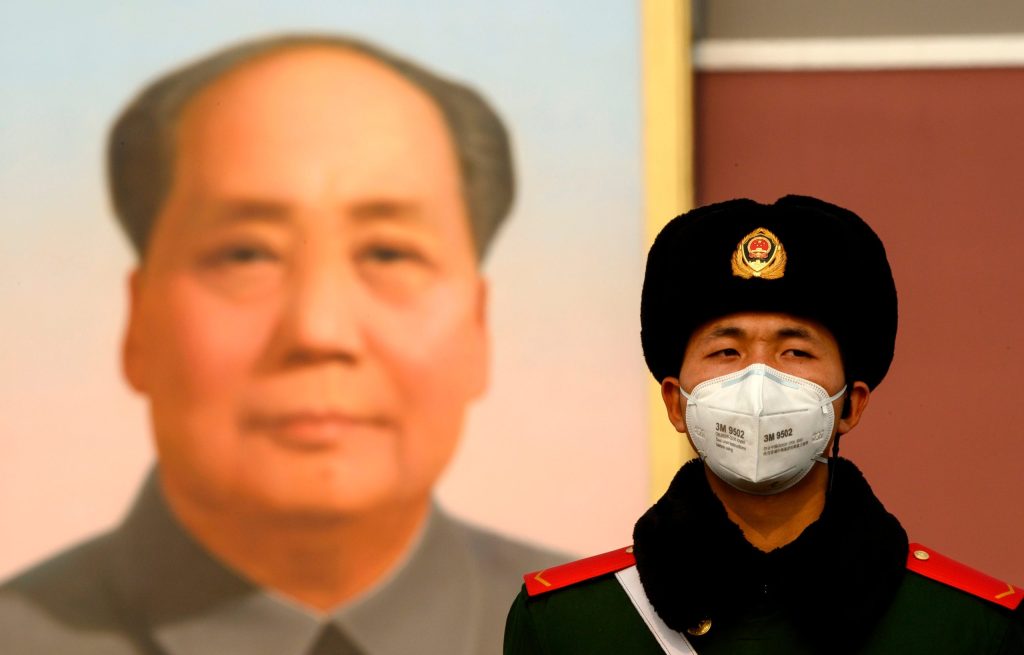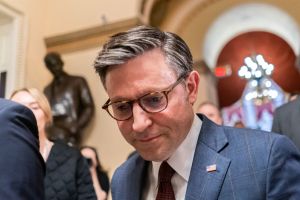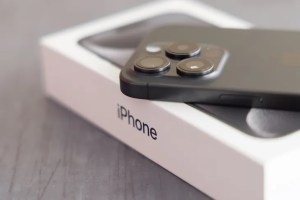History repeats itself, said Marx, first as tragedy and then as farce. And when it comes to the world’s latest pandemic, China and the coronavirus are no historical exception. ‘Mao’s Flu Strikes’, The Observer declared in November 1968. ‘200,000 people are ill with Mao’s Flu in Rome’, the paper reported, ‘and the epidemic is expected to grow in the next few weeks.’
While the people of the Sixties may have sidestepped today’s toilet paper stockpiling, the ‘Mao Flu Panic’ was soon high on their minds. By its conclusion in 1969, Mao flu – now known historically as ‘Hong Kong flu’ — had killed around one million people worldwide, including 100,000 in the US.
But despite having originated in its southern Yunnan province, the question of how many actually died in China may never be answered. The country had severed its ties with the World Health Organization and nearly all cross-border information flow was restricted. Meanwhile, two years into its Cultural Revolution, both China’s economy and its pre-revolutionary history verged on almost-wholesale destruction.
From that deep nadir, China has since emerged as one of the world’s predominant superpowers. There are many reasons to explain the country’s meteoric growth. Yet one that is often overlooked is how its reaction to disease outbreaks and the country’s determination to try and avoid them helped it along the way.
Both before and after the Hong Kong flu took hold, infectious disease was a stubborn focus for Mao’s regime. Data from before the 1949 Revolution — a time when China was known historically as the ‘sick man of Asia’ — indicates that the majority of its vast problems with health emerged from such infections. And in their response, Mao and his cadres did no less than launch a full-scale medical revolution.
By the 1970s, China delivered improvements to life expectancy, infant mortality and rates of infectious disease widely regarded as remarkable, with a pace that far exceeded its rates of economic growth and those of similarly developed nations.
Where other populations may have buckled under the Great Leap Forward and the Cultural Revolution — putting aside the damage of day-to-day Maoist economics — China’s health outcomes stand as a rough indicator unto itself, with broad independence from purely socioeconomic measures. China’s life expectancy between 1950 and 1980 ‘ranks as among the most rapid sustained increases in documented global history’ and presaged the substantial development still to come.
Once market reforms were enacted in 1978, their success ‘depended heavily’ on the exceptional relative health of its labor force. As an economic model known as the ‘Preston Curve’ shows, economic growth and public health are significantly interrelated. China was no exception. Proper healthcare provision facilitated China’s labor-boosting population boom. More than simply guns and gold, China’s journey has been one of needles, herbs and germs, too.
Mao’s health policy was also a catalyst for Beijing’s existing political forces. First launched in the early-1950s, his ‘patriotic health campaigns’ used China’s everyday peasantry as a ground force for clean drinking water and waste disposal. In doing so, however, Mao sought to inspire the spirit of collective action necessary for later revolution, and the campaigns would soon play an important role in the communes of the Great Leap Forward.
There are echoes of these policies in China’s response to COVID-19. Thousands of volunteers are providing vital resources like food and medical care to those behind the quarantine. And government employees have been recruited across the board as ad hoc medical personnel for containing the virus. Vaccines and treatments, including traditional Chinese medicine, have been distributed free of charge. This is a policy that seems to accelerate China’s moves away from the strict private healthcare system first implemented under the market reforms. It also harks back to the socialized approach of Mao’s ‘barefoot doctors’, a million strong-model army of itinerant workers that dispensed free vaccinations and medicine in rural townships.
As well as delivering primary health care, Mao’s ‘barefoot doctors’ were useful assets for the Cultural Revolution, which has effects on Chinese people’s social standing and trust in government to this day. They exemplified Mao Zedong’s thought, the ‘back to the countryside’ ethic, symbolizing the selfless solidarity expected of true revolutionaries.
But while Mao’s intent was to mobilize the masses from the bottom up, the party response to COVID-19 runs largely in the opposite direction. As professor Rana Mitter, an expert on Chinese political history at Oxford, explains, Xi’s policy today has been top down effort designed to derive political ‘plus points’ for the party in Beijing. Where the Hong Kong flu sowed the seeds for a mass-movement peasantry, coronavirus is being used to bring hearts and minds to the party’s center.
More so than past Chinese epidemics, the coronavirus also holds a significant international element. The Xi government has criticized the West for its ‘slow response’ while the virus’ spread owes a debt to the vastness of global supply chains.
At the time of the Hong Kong flu of 1968, China was virtually stranded. It lacked firm relations with any of diplomacy’s major power players and was embroiled in Cold War politics. But Essex University’s Dr Xun Zhou, the recent author of The People’s Health, makes clear that the earliest Sino-American communications in the mid-1960s were actually among stateside doctors.
They told domestic audiences about the successes of China’s medical policy and even petitioned policymakers to glean lessons for America’s own healthcare failings. International health authorities soon took notice of China’s ‘barefoot doctors’. They were heralded as an innovation in primary healthcare and Beijing was admitted to the WHO in 1971. Four months after the famous ‘ping pong’ exchange in 1971, an American medical delegation arrived in the Republic charged with learning more about Chinese medicine, making what Xun calls ‘arguably the first step’ towards the Nixon-Mao rapprochement the following year.
Chinese ascendancy will be the headline of modern times. Its rise from backwater to world-beater can’t just be a story of economics, though. Healthcare, and particularly China’s Revolutionary dialectic with infectious disease, can’t be left out the picture. Whether it be driving the market reforms, triggering globalization or catalyzing its tides of political change, the footprints of the ‘barefoot doctors’ are clear to see, even in this latest outbreak.
This article was originally published onThe Spectator’s UK website.


















